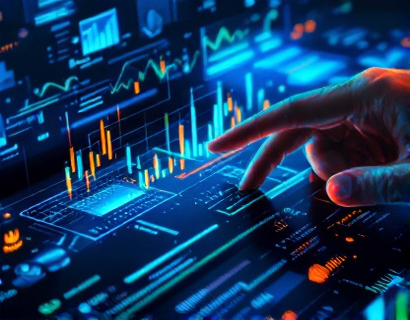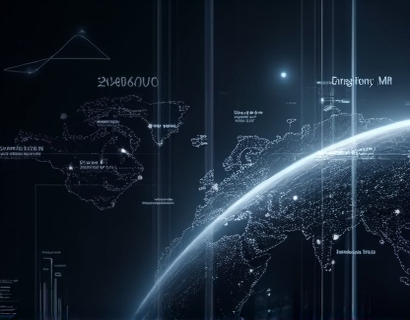Maximizing Aquaponics Business Success with Advanced Management Software
In the rapidly evolving world of sustainable agriculture, aquaponics stands out as a promising method that combines fish farming and hydroponic plant cultivation in a symbiotic environment. For aquaponics businesses, achieving success involves not only understanding the intricate balance between fish and plant systems but also implementing efficient management practices. Advanced management software plays a crucial role in streamlining operations, boosting productivity, and enhancing sustainability. This article delves into how such software can transform aquaponics farming, providing tools for precise monitoring and control, and ensuring optimal conditions for both fish and plants while minimizing environmental impact.
Understanding the Importance of Management Software in Aquaponics
Aquaponics systems are complex and require constant monitoring to maintain the delicate balance of water quality, nutrient levels, and environmental conditions. Traditional methods of managing these systems can be time-consuming and prone to human error. Advanced management software addresses these challenges by offering a comprehensive suite of tools designed to optimize every aspect of aquaponics farming. These tools enable farmers to monitor and control various parameters in real-time, ensuring that the system operates efficiently and sustainably.
Real-Time Monitoring and Control
One of the key features of advanced management software is real-time monitoring and control. This capability allows farmers to track critical parameters such as water temperature, pH levels, dissolved oxygen, and nutrient concentrations continuously. By having access to this data in real-time, farmers can make informed decisions quickly, adjusting conditions as needed to maintain optimal environments for fish and plants. For instance, if the pH level drops below the desired range, the system can automatically trigger a correction, preventing potential damage to the crops and fish.
Moreover, real-time monitoring helps in early detection of issues such as disease outbreaks or equipment failures. For example, a sudden drop in fish activity or a spike in ammonia levels can indicate a problem that needs immediate attention. With alerts and notifications, farmers can respond promptly, minimizing the impact on the system and ensuring the health of the aquatic life.
Automation and Integration
Automation is another significant advantage of advanced management software. By automating routine tasks, farmers can reduce labor costs and free up time to focus on more strategic aspects of the business. Automation can control feeding schedules, adjust lighting, manage water circulation, and even regulate heating and cooling systems. This level of automation not only increases efficiency but also ensures consistency in the care provided to the fish and plants.
Integration with existing hardware and third-party services further enhances the functionality of the software. For example, integrating sensors and actuators allows for seamless data collection and action execution. This integration can include connecting to weather stations to adjust systems based on external conditions, or linking with inventory management systems to track feed and plant nutrient supplies. Such comprehensive integration ensures that all aspects of the aquaponics operation are coordinated and optimized.
Enhancing Productivity and Yield
Productivity and yield are critical factors for the success of any aquaponics business. Advanced management software contributes to these goals by providing data-driven insights and optimization tools. By analyzing historical data and current conditions, the software can identify trends and patterns that inform better decision-making. For instance, it can suggest optimal stocking densities, feeding rates, and harvest times based on the specific needs of the fish and plant species being cultivated.
Additionally, the software can help in planning and scheduling tasks more effectively. By automating the creation of schedules for feeding, cleaning, and maintenance, farmers can ensure that all tasks are completed on time and with precision. This level of organization reduces the risk of oversights and ensures that the system runs smoothly, leading to higher yields and better quality produce.
Optimizing Resource Usage
Sustainability is a core principle of aquaponics, and advanced management software plays a vital role in achieving this goal. By optimizing resource usage, the software helps reduce waste and lower operational costs. For example, precise control over water usage ensures that only the necessary amount is used, minimizing water consumption and reducing the environmental footprint. Similarly, optimized nutrient management prevents over-fertilization, which can lead to nutrient runoff and water pollution.
The software can also assist in energy management by monitoring and adjusting the power consumption of various system components. By identifying periods of high energy usage and suggesting adjustments, the software helps farmers reduce energy costs and decrease their carbon footprint. This not only benefits the business financially but also aligns with the growing demand for environmentally friendly practices.
Improving Sustainability and Environmental Stewardship
Sustainability is not just a buzzword in the aquaponics industry; it is a fundamental commitment to responsible farming practices. Advanced management software supports this commitment by providing tools and insights that promote environmental stewardship. One of the primary ways it does this is through precise control over chemical usage. By maintaining optimal water conditions, the software reduces the need for chemical treatments, which can be harmful to both the environment and the aquatic life.
Furthermore, the software can help in tracking and reporting on sustainability metrics, such as water and energy usage, waste production, and carbon emissions. These metrics are essential for demonstrating the environmental benefits of aquaponics to stakeholders, including customers, investors, and regulatory bodies. By providing transparent and accurate data, farmers can build trust and credibility, which is crucial for long-term success.
Compliance and Reporting
Compliance with environmental regulations is another area where advanced management software shines. Many regions have specific guidelines and standards for aquaponics operations to ensure they do not harm the surrounding ecosystem. The software can be configured to monitor and record data relevant to these regulations, such as nutrient levels, water quality, and waste management practices. This ensures that the farm remains compliant and can easily generate reports for audits and inspections.
Additionally, the software can assist in obtaining certifications related to sustainability, such as organic or eco-friendly labels. By maintaining detailed records and demonstrating adherence to best practices, farmers can enhance their market position and access premium markets that value sustainable products.
Building a Resilient and Adaptive Business
In an industry as dynamic as aquaponics, resilience and adaptability are key to long-term success. Advanced management software equips farmers with the tools needed to navigate challenges and seize opportunities. For instance, the software can simulate different scenarios based on changing environmental conditions or market demands, allowing farmers to plan and adjust their strategies proactively.
Data analytics is a powerful feature of modern management software. By analyzing large datasets, farmers can gain insights into the performance of their systems, identify areas for improvement, and make data-driven decisions. This analytical capability is particularly useful for optimizing crop and fish species selection, adjusting operational parameters, and forecasting market trends.
Customer Engagement and Market Expansion
Beyond operational efficiency, advanced management software can also enhance customer engagement and market expansion. By providing detailed information about the farming process, such as the origin of the produce and the sustainable practices used, farmers can build stronger connections with their customers. This transparency can lead to increased customer loyalty and a positive brand reputation.
Moreover, the software can facilitate direct sales and marketing efforts through integrated e-commerce platforms. Farmers can sell their products directly to consumers, bypassing intermediaries and capturing a larger share of the profit. This direct-to-consumer model not only increases revenue but also allows for better control over the customer experience and feedback.
Conclusion
Advanced management software is a transformative tool for aquaponics businesses, offering a range of benefits that extend beyond operational efficiency to sustainability and market success. By leveraging real-time monitoring, automation, data analytics, and integration capabilities, farmers can optimize their systems, reduce costs, and enhance the quality of their produce. As the aquaponics industry continues to grow, embracing advanced management software will be essential for staying competitive and contributing to a more sustainable future.










































